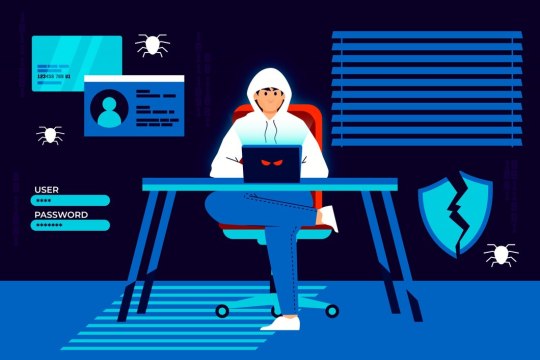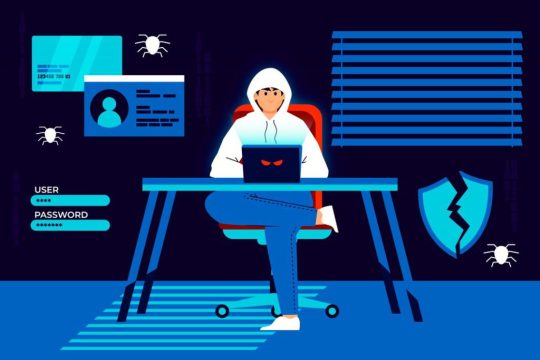#Intellectualpropertyrights
Text
What are the Essential Cybersquatting Laws in India? | 2024

In today’s world, the internet plays a huge role in business and daily life. Having an online presence has become essential for businesses to grow and stay competitive. Websites and domain names are crucial parts of this online presence. However, with the growing importance of domain names, a problem called cybersquatting has emerged. There are Cybersquatting Laws in india.
Cybersquatting involves registering, selling, or using a domain name that belongs to someone else, usually a well-known business or brand, with the intent to make a profit. This practice is considered illegal in many countries, including India, and there are laws to prevent it. In this article, we will explore cybersquatting, its effects, and how the Indian legal system deals with it.

What Is Cybersquatting?
Cybersquatting happens when someone registers a domain name that is similar or identical to a well-known trademark or business name. The aim of cybersquatters is to sell the domain name at a higher price to the rightful owner, causing disruption and confusion for businesses. For example, if a company named "Bright Electronics" has the domain name "brightelectronics.com," a cybersquatter might register "brightelectronics.in" with the hope of selling it to Bright Electronics for a hefty sum.
Cybersquatting can hurt businesses in multiple ways:
- Brand Confusion: Customers may get confused about which website is the official one, leading to a loss of trust.
- Financial Loss: Businesses might have to spend a large amount of money to buy the domain from the cybersquatter.
- Damage to Reputation: A cybersquatter may use the domain to post harmful or inappropriate content, damaging the brand’s reputation.
Cybersquatting laws in India: An Overview
India has seen a rise in cybersquatting cases with the increasing importance of online business. The Indian legal system has provisions to protect businesses from cybersquatting. While India does not have a specific law dedicated solely to cybersquatting, it addresses the issue through various legal frameworks such as trademark laws and domain name dispute policies.
The primary law that deals with cybersquatting in India is the Indian Trade Marks Act, 1999, which protects trademarks from misuse, including in the online space. Additionally, domain name disputes are handled under the .IN Domain Name Dispute Resolution Policy (INDRP), which was created to resolve conflicts related to domain names ending in .in.
Indian Trade Marks Act, 1999 and Cybersquatting
The Trade Marks Act, 1999 is the main law that provides protection to trademarks in India. A trademark is any word, name, symbol, or design that identifies and distinguishes the source of goods or services. If someone uses a domain name that is confusingly similar to a registered trademark, it can be considered trademark infringement.
Under this act, the rightful owner of a trademark can take legal action against the cybersquatter for infringing on their rights. The remedies available under the act include:
- Injunction: The court may order the cybersquatter to stop using the domain name.
- Damages: The cybersquatter may be required to pay damages to the rightful owner.
- Transfer of Domain: The court may direct the transfer of the disputed domain name to the rightful owner.
.IN Domain Name Dispute Resolution Policy (INDRP)
Apart from trademark law, the .IN Domain Name Dispute Resolution Policy (INDRP) plays a significant role in addressing cybersquatting in India. The policy applies to all domain names that end with “.in” (such as "example.in").
The INDRP was introduced by the National Internet Exchange of India (NIXI) to resolve disputes involving .in domain names. If a person or business believes that someone has registered a domain name in bad faith, they can file a complaint under the INDRP.
A domain name is considered to be registered in bad faith if:
- The cybersquatter registered it to sell it at a higher price to the rightful owner.
- The domain name is being used to confuse or mislead customers.
- The cybersquatter is using the domain to harm the reputation of the trademark owner.
Under the INDRP, a sole arbitrator is appointed to decide the case. The process is quicker than traditional court proceedings, and if the arbitrator rules in favor of the trademark owner, the domain name is usually transferred to them.
Famous Cybersquatting Cases in India
There have been several notable cybersquatting cases in India, which highlight the importance of protecting domain names and trademarks.
- Tata Sons Ltd. v. Manu Kosuri & Others: In this case, Tata Sons, the well-known Indian conglomerate, filed a case against a cybersquatter who had registered domain names like "tatainfotecheducation.com" and "tatainfotech.in". The court ruled in favor of Tata Sons, stating that the use of the domain names was an attempt to benefit from Tata’s established reputation and goodwill. The court ordered the transfer of the domain names to Tata Sons.
- Yahoo! Inc. v. Akash Arora: In this case, the defendant had registered the domain name "yahooindia.com" which was similar to the well-known "yahoo.com". The court ruled in favor of Yahoo! Inc., stating that the use of a domain name that was deceptively similar to a well-known brand could lead to confusion among users. The defendant was ordered to stop using the domain name.
- Infosys Technologies Ltd. v. Domain Admin/Vertical Axis Inc.: In this case, Infosys, a leading IT company, filed a complaint under the INDRP regarding the domain name "infosys.org". The arbitrator ruled in favor of Infosys, stating that the domain name had been registered in bad faith, and ordered the transfer of the domain to Infosys.
These cases demonstrate that Indian courts and arbitration panels are taking cybersquatting seriously and providing remedies to protect the rights of businesses.
How to Prevent Cybersquatting
While the legal system provides protection against cybersquatting, it’s always better for businesses to take preventive measures. Here are some steps that businesses can take to avoid falling victim to cybersquatting:
- Register Multiple Domain Extensions: Businesses should register their domain names with multiple extensions such as .com, .in, .net, and others to prevent cybersquatters from grabbing similar names.
- Monitor Domain Registrations: Businesses can use tools to monitor new domain name registrations that are similar to their brand names. This helps them take swift action if someone registers a domain in bad faith.
- Register Trademarks: Having a registered trademark provides businesses with legal protection against cybersquatting. It makes it easier to file a complaint or take legal action if someone infringes on their trademark.
- Be Proactive: If a business suspects that someone has registered a domain name in bad faith, it should act quickly. Filing a complaint under the INDRP or taking legal action early can prevent further harm.
Conclusion
Cybersquatting is a growing problem in India, as more businesses rely on the internet to reach their customers. Although India does not have a dedicated cybersquatting law, it provides protection to businesses through the Trade Marks Act, 1999, and the .IN Domain Name Dispute Resolution Policy. By understanding these laws and taking proactive steps, businesses can protect their online presence and avoid the negative consequences of cybersquatting.
If you suspect that your domain name has been registered by a cybersquatter, or if you want to learn more about how to protect your business from cybersquatting, feel free to contact Trident Legal Services. We are here to help you safeguard your brand and navigate the complexities of cybersquatting laws in India.
Read the full article
#Cybersquatting#DomainNameDisputes#INDomainNameDisputeResolutionPolicy(INDRP)#IndianCyberLaw#InformationTechnologyAct2000#IntellectualPropertyRights#Passingoffindomainnames#TrademarkInfringement#UniformDomain-NameDispute-ResolutionPolicy(UDRP)
0 notes
Text
10 Reasons Why TSCM Services Are Essential For Business Protection

Understanding TSCM Services
Technical Surveillance Countermeasures (TSCM) services are specialized security measures that detect and prevent illegal surveillance activity. These services aim to protect enterprises, organizations, and individuals from various forms of espionage, including the use of covert listening devices (bugs), concealed cameras, wiretaps, and other electronic surveillance instruments.
Key Aspects of TSCM Services for Business Protection
1. Electronic sweeps:
TSCM personnel employ cutting-edge equipment to conduct electronic sweeps of workplaces, boardrooms, and homes in order to locate hidden surveillance devices. These devices may contain microphones, cameras, GPS trackers, and other clandestine instruments used to collect sensitive information.
2. Physical inspections:
In addition to electronic sweeps, TSCM services frequently involve detailed physical inspections of the facilities. This includes looking for indicators of tampering, odd wiring, or hidden gadgets that may not be detectable by electrical means alone.
3. Signal analysis:
TSCM professionals examine the radio frequency (RF) spectrum for unlawful transmissions. This aids in recognizing gadgets that may be broadcasting audio or video signals to other locations.
4. Cybersecurity Integration:
While TSCM primarily addresses physical surveillance risks, it frequently includes an assessment of digital security weaknesses. This ensures that cyber methods cannot remotely activate or operate surveillance devices.
5. Ongoing Monitoring:
Some TSCM systems provide continuous monitoring to detect and respond to new threats as they arise. This is particularly important in high-risk workplaces that frequently discuss or handle sensitive data.
Applications for TSCM Services
- Corporate security: Businesses employ TSCM services to safeguard their trade secrets, intellectual property, and sensitive communications from competitors or hostile insiders.
- Government and military: The TSCM is critical for safeguarding confidential information and national security interests from foreign espionage.
- Personal Privacy: High-profile individuals, such as executives, celebrities, and politicians, may use TSCM services to safeguard their privacy from unlawful surveillance.
- Legal and financial sectors: law firms, financial organizations, and other entities that handle sensitive information use TSCM to protect client confidentiality and avoid data breaches.
Importance of TSCM Services for Business Protection
TSCM services are critical for enterprises that handle sensitive data, face high espionage risks, or require stringent confidentiality. By detecting and neutralizing surveillance threats, TSCM services assist in preventing information leaks, protecting intellectual property, and ensuring the integrity of communications and operations.
10 Reasons Why TSCM Services Are Essential for Business Protection
In today's fast-paced, technologically driven world, organizations face an ever-increasing number of dangers to their security, privacy, and intellectual property. From business espionage to data breaches, safeguarding sensitive information has never been more important. One of the most effective ways to protect your business from these attacks is to use Technical Surveillance Countermeasures (TSCM) services. Here are seven convincing reasons why TSCM services are critical to defending your company.
1. Preventing Corporate Espionage
Corporate espionage poses a huge threat to firms of all kinds. Competitors could try to acquire an unfair edge by stealing proprietary information, trade secrets, or sensitive data. By detecting and uninstalling covert surveillance devices like bugs, wiretaps, and hidden cameras, TSCM services help prevent business espionage. Businesses can prevent illegal monitoring of meetings, communications, and sensitive places by conducting TSCM sweeps on a regular basis.
Corporate espionage can lead to significant financial losses, reputational damage, and a loss of competitive advantage. The cost of a TSCM service is negligible when compared to the potential implications of losing your company's most critical information.
2. Protecting Intellectual Property
Intellectual property (IP) is frequently the lifeblood of a company, particularly in fields like technology, medicine, and manufacturing. Theft of intellectual property can have disastrous consequences, including a loss of market share, money, and innovative potential. TSCM services protect your intellectual property by guaranteeing that your research and development areas, as well as other sensitive sites, are free of listening devices.
Whether it's the creation of a new product, a revolutionary idea, or proprietary software, TSCM services provide the required safeguards to protect your intellectual property from prying eyes. Protecting your intellectual property allows you to keep your competitive advantage and continue to innovate without fear of theft.
3. Ensuring Confidentiality at Business Meetings
Business meetings frequently entail the exchange of sensitive information, such as strategic plans, financial data, and legal issues. The disclosure of sensitive information could result in serious consequences, ranging from legal penalties to a loss of client trust. By identifying hidden devices that could potentially record or send critical information, TSCM services safeguard the confidentiality of your business meetings.
High-stakes meetings, such as those involving mergers and acquisitions, investor discussions, or negotiations with significant partners, require strict confidentiality. TSCM services provide peace of mind by guaranteeing that your meeting rooms are safe and free of unlawful surveillance.
4. Addressing Insider Threats for Business Protection
Insider threats are among the most difficult security problems to address. Employees, contractors, or other insiders who have access to sensitive information may utilize that access for nefarious purposes, such as leaking secret data or installing surveillance equipment. TSCM services help to reduce insider threats by frequently examining your facilities for unwanted surveillance devices and monitoring places where sensitive information is handled.
TSCM sweeps allow firms to discover and mitigate possible insider threats before they escalate. This proactive approach helps ensure the integrity of your business processes and safeguards against the risks associated with harmful insiders.
5. Meeting Legal and Regulatory Requirements
Many industries have severe legal and regulatory requirements for the safeguarding of sensitive information. Failure to comply with these rules can result in significant fines, punitive penalties, and reputational harm. TSCM services help to ensure compliance with these standards by conducting a complete assessment of your security procedures and detecting any vulnerabilities that could lead to a breach.
For example, in the financial, healthcare, and defense industries, particular requirements require the protection of client data, patient information, and classified materials. TSCM services help organizations meet these criteria by ensuring that their premises are safe and free from unlawful surveillance.
6. Ensuring client trust and reputation
Trust is an essential component of any successful business partnership. Clients expect you to secure their sensitive information and behave in their best interests. A breach of trust, whether caused by a data leak or unlawful surveillance, can have long-term ramifications for your company's reputation. TSCM services uphold client trust by guaranteeing the security of your organization and the protection of sensitive client information.
In an age when data breaches and cyberattacks are becoming more regular, organizations must go above and beyond to demonstrate their dedication to security. TSCM services provide an extra layer of protection that might help you maintain client trust and your company's reputation.
7. Preventing unauthorized access to trade secrets for Business Protection
Trade secrets are a vital asset for any organization, and they frequently provide a competitive advantage in the marketplace. However, they are an attractive target for corporate espionage and theft. By detecting and disarming any surveillance devices that could potentially steal this important data, TSCM services aid in preventing unwanted access to trade secrets.
Whether it's a unique manufacturing process, a patent formula, or a sensitive client list, TSCM services keep your trade secrets protected. Protecting these assets allows you to maintain your competitive advantage while avoiding the severe penalties of trade secret theft.
8. Improving Cybersecurity Effort
TSCM services primarily detect physical surveillance concerns, but they also significantly enhance your overall cybersecurity efforts. Cybercriminals frequently employ a combination of physical and digital tactics to obtain access to sensitive data. TSCM services aid in pinpointing possible vulnerabilities in your physical security that could potentially lead to a cyberattack.
For instance, a cyberattack might use a hidden camera or microphone to record passwords, access codes, or other sensitive information. By tackling these physical security issues, TSCM services help to improve your total cybersecurity posture and defend your company from both physical and digital threats.
9. Protecting against Industrial Espionage
Industrial espionage is the covert collection of trade secrets, private information, or other sensitive data in order to gain a competitive advantage. Competitors, foreign entities, or even dissatisfied staff may carry out this type of espionage. A private detective play a crucial role in safeguarding your company against industrial espionage, as they identify and disarm any surveillance devices that could potentially gather information.
The manufacturing, energy, and technology industries are especially vulnerable to industrial espionage because their intellectual property and trade secrets are so valuable. The TSCM services provide the necessary safeguards to prevent competitors from accessing and using your important information.
10. Providing peace of mind for your business protection
Finally, one of the most essential reasons to invest in TSCM services is the peace of mind they bring. Knowing that your company is safe from illegal observation and that your sensitive information is secure helps you concentrate on what matters most: running and growing your business.
The ongoing concern of corporate espionage, data breaches, and insider threats can be unpleasant for business owners and executives. TSCM services ease this tension by offering a comprehensive security solution that covers both physical and digital risks. With TSCM services in place, you can be confident that your firm is secure and that you are taking proactive measures to protect your assets.
Conclusion
In an increasingly linked world, threats to your company's security are more broad and sophisticated than ever. From corporate espionage to insider threats, protecting your sensitive information has never been more important. TSCM services address these dangers in a comprehensive manner by detecting, identifying, and disarming unwanted surveillance devices and activities.
The ten reasons presented in this blog indicate how important TSCM services are to securing your organization. By avoiding corporate espionage, protecting intellectual property, preserving the secrecy of business meetings, and managing internal risks, TSCM services provide the protection your company requires to thrive in a competitive climate.
Investing in TSCM services is more than just addressing urgent dangers; it is also about laying a solid foundation for your company's future. Whether you're concerned about legal compliance, safeguarding client confidence, or improving your cybersecurity efforts, TSCM services provide the peace of mind that comes from knowing your organization is secure.
To summarize, TSCM services are not a choice; they are required for any firm that values its security, reputation, and long-term success. Integrating TSCM services into your security plan allows you to business protection from today's ever-changing threats while also ensuring the safety and security of your most valuable assets.
Read the full article
#BusinessProtection#CorporateInvestigaitons#intellectualpropertyprotection#IntellectualPropertyRights#TSCMServices
0 notes
Text
Intellectual Property Rights

Intellectual Property Rights (IPR) protect creations of the mind, including inventions, literary and artistic works, designs, symbols, names, and images. They provide creators with exclusive rights to use, produce, and distribute their creations, fostering innovation and ensuring creators receive recognition and financial benefits for their work.
#IntellectualProperty#IPR#Innovation#Creativity#Patent#Copyright#Trademark#DesignRights#LegalProtection#IPLaw#Inventions#CreativeWorks#IntellectualPropertyRights
0 notes
Text
In today's ever-changing landscape, managing and securing intellectual property (IP) has become more significant and crucial than ever. Intellectual property (IP) plays a leading role across all industries, including corporations
0 notes
Text
In the realm of Applied Behavior Analysis (ABA), the Verbal Behavior Milestones Assessment and Placement Program (VB-MAPP) is an invaluable tool. Developed by Dr. Mark Sundberg, the VB-MAPP is widely used to assess language and social skills in individuals with autism and other developmental disabilities. However, the unauthorized distribution and use of VB-MAPP PDFs has become a significant issue, raising concerns about intellectual property rights and ethical practices. This blog explores the importance of protecting intellectual property, the specific case of VB-MAPP PDFs, and the broader implications for the ABA community.
#VBMAPPIssues#IntellectualPropertyRights#ABACommunity#AutismAssessment#DevelopmentalDisabilities#EthicalPractices#CopyrightProtection#ABAProfessionalism#DrMarkSundberg#BehaviorAnalysis
1 note
·
View note
Link
The entertainment industry is making a stand for creator rights in the age of artificial intelligence. A newly proposed bill, spearheaded by Hollywood heavyweights, aims to increase transparency around how AI companies train their systems, potentially offering creators legal ammunition in the fight against potential copyright infringement. A Call for Transparency: The Schiff Bill On Tuesday, Representative Adam Schiff (D-Calif.) introduced legislation that would require companies developing generative AI systems to disclose the copyrighted works used to train their models. This means companies like OpenAI would be obligated to reveal the source material used to create AI tools like their video generation system, Sora. Hollywood Takes Aim Why Does Transparency Matter? The rise of generative AI tools poses a unique challenge to the entertainment industry. These tools can create content that closely resembles human-made works, raising concerns about copyright infringement. By requiring disclosure of training data, the bill seeks to establish a clearer picture of how AI systems are built, potentially providing evidence for creators who believe their work has been misappropriated. This transparency could empower creators in a few key ways: Identifying Copyright Infringement: If a disclosed list of training data reveals unauthorized use of copyrighted material, creators could use this information to pursue legal action against AI companies. Strengthening Copyright Claims: Knowing how their work was used in AI training could provide creators with a stronger case in potential copyright infringement lawsuits. Establishing Fair Compensation: Transparency could pave the way for discussions about fair compensation for creators whose work contributes to the development of AI systems. Industry Unites in Support The Schiff bill has garnered widespread support from various entertainment industry guilds and unions. These organizations believe their members' work is being used without proper authorization in the training of AI systems. Here's a glimpse into the industry's response: Writers Guild of America West: Praised the bill as a "critical first step" in addressing the unauthorized use of copyrighted material in AI training. (Statement by President Meredith Stiehm) Directors Guild of America: Echoed the sentiment, emphasizing the importance of protecting filmmakers' intellectual property. (Statement by President Lesli Linka Glatter) IATSE International: Highlighted the potential for the bill to empower workers to enforce their rights. (Statement by President Matthew D. Loeb) Additional endorsements come from the Recording Industry Association of America (RIAA), Authors Guild, National Association of Voice Actors (NAVA), and various other creative industry organizations. The Bill's Mechanics: Transparency with Deadlines The proposed legislation outlines specific requirements for AI companies: Disclosure of Training Data: Entities developing generative AI systems must submit a "sufficiently detailed summary of any copyrighted works used" to regulators within 30 days of the product's launch. Database Creation: The U.S. Copyright Office will establish a public database containing the submitted information. Non-Compliance Penalty: Failure to comply with disclosure requirements will result in a fine of $5,000. Navigating the Path to Implementation While the bill enjoys significant industry support, its journey through Congress may be challenging. Here are some potential hurdles: Legal Uncertainty: There's ongoing legal debate surrounding the use of copyrighted material in AI training. Courts are currently grappling with lawsuits from creators, and a clear legal precedent may take time to establish. Competitive Advantage Concerns: AI companies may resist the bill, arguing that disclosing training data compromises their competitive edge. The Human Touch: Protecting Creativity in the AI Age The debate surrounding the Schiff bill highlights the tension between technological advancement and creator rights. As AI continues to evolve, establishing clear guidelines for responsible development is crucial. The message from Hollywood is clear: "Everything generated by AI ultimately originates from a human creative source," states SAG-AFTRA executive director Duncan Crabtree-Ireland. The bill aims to ensure that "human creative content – intellectual property – must be protected."
#AItransparencybill#copyrightinfringement#creatorsrights#entertainmentindustry#ethicalconsiderations#Hollywood#HollywoodTakesAim#intellectualpropertyrights#legalcomplexities#openai#Rep.AdamSchiff
0 notes
Text

Trademark Registration in India
#TrademarkLaw#IntellectualPropertyRights#BrandProtection#TrademarkRegistrationProcess#TrademarkApplication#TrademarkInfringement#TrademarkSearch#TrademarkAttorney#TrademarkSymbol#TrademarkDatabase#TrademarkStrategy#TrademarkEnforcement#TrademarkPortfolio#TrademarkProtection#TrademarkManagement
0 notes
Text
Unlocking Legal Avenues: Trademark Registration in Delhi with Legalari
Trademark Registration in Delhi

Understanding Trademark Registration
Before delving into the specifics of trademark registration in Delhi, let’s grasp the essence of this legal safeguard. A trademark is not merely a symbol or a name; it embodies the essence of your brand, encapsulating its reputation, quality, and identity. From logos to slogans, trademarks encompass various elements that distinguish your products or services from others in the market.
In Delhi, a bustling hub of commerce and culture, securing your trademark is indispensable. However, navigating the legal landscape can be daunting without the right guidance. This is where Legalari steps in, offering comprehensive assistance tailored to your needs.
Navigating Delhi’s Legal Terrain
Delhi, as the capital of India, boasts a dynamic economy teeming with diverse businesses. However, this dynamism also brings forth challenges, especially concerning intellectual property rights. Trademark registration in Delhi demands adherence to stringent legal procedures and thorough documentation. Legalari understands the intricacies of Delhi’s legal terrain and ensures a seamless registration process for your trademark.
The Legalari Advantage
As you embark on the journey of trademark registration in Delhi, partnering with Legalari proves advantageous in numerous ways:
Expert Guidance: Legalari boasts a team of seasoned legal experts well-versed in intellectual property laws. From filing applications to resolving disputes, our experts provide invaluable guidance at every step.
Tailored Solutions: Recognizing that each business is unique, Legalari offers customized solutions tailored to your specific requirements. Whether you’re a startup or a multinational corporation, we adapt our strategies to suit your needs.
Efficiency and Timeliness: In Delhi’s fast-paced business environment, time is of the essence. Legalari prioritizes efficiency and ensures timely completion of all legal formalities, expediting the registration process without compromising on quality.
Comprehensive Support: Beyond trademark registration, Legalari offers a plethora of legal services, including copyright protection, patent registration, and legal consultancy. Our holistic approach caters to all your legal needs under one roof.
The Road Ahead
Trademark registration in Delhi is not merely a legal obligation; it’s a strategic investment in your brand’s future. With Legalari by your side, you can navigate this journey with confidence, knowing that your intellectual property rights are in capable hands. As you embark on this endeavor, remember that safeguarding your trademark is not just about protecting your assets; it’s about safeguarding your legacy in Delhi’s vibrant business landscape.
In conclusion, Legalari stands as your trusted partner in the realm of trademark registration in Delhi. With our expertise and unwavering commitment, we pave the way for your brand’s success, ensuring its recognition and protection in the competitive marketplace. As you embark on this transformative journey, remember that your trademark is more than just a symbol — it’s a testament to your dedication, innovation, and vision.
#TrademarkProtectionDelhi#LegalariTrademark#DelhiBusinessLaw#IntellectualPropertyRights#TrademarkConsultancy#LegalariAssistance#BrandProtectionDelhi#TrademarkExpertise#LegalariGuidance#DelhiTrademarkRegistration
0 notes
Text
MrBeast's Feastables Branding Denied Use of 'Deez Nuts' Phrase: Trademark Battle Explained
#DeezNuts #FCTRY #Feastablesbranding #intellectualpropertyrights #JasonFellman #mrBeast #noveltyitems #trademarklaw #trademarkregistration #UnitedStatesPatentandTrademarkOfficeUSPTO
#Business#DeezNuts#FCTRY#Feastablesbranding#intellectualpropertyrights#JasonFellman#mrBeast#noveltyitems#trademarklaw#trademarkregistration#UnitedStatesPatentandTrademarkOfficeUSPTO
0 notes
Text





IIT Roorkee's Intellectual Property Rights (IPR) Cell organized a 'Accelerating Ideas into Patents Using AI' workshop. The event highlighted AI's role in expediting the patent process, including idea patentability checks and prior art searches. Attendees witnessed a live case study demonstrating within minutes patent drafting.
0 notes
Text
Legality of NFTs in India as per IPR: All You Need to Know

This article on 'NFTs legality as per IPR: All You Need to Know' was written by Madiha Khan, an intern at Legal Upanishad.
Introduction
NFTs, or non-fungible tokens, are a type of cryptocurrency token that comprises a variety of physical and virtual properties. It includes images, gifs, drawings, movies, multimedia recordings, and other media. Each NFT is distinct and regarded as a rarity. A blockchain digital journal is used to document NFTs in a way that confirms their originality and legitimacy. Blockchain technologies are digital blocks that keep track of all the transactions involving the virtual digital asset, also known as VDA, where the data and title of NFTs holders are kept. The Intellectual property laws apply to royalty-free licenses on how their CryptoPunks may be used in derivative works belonging to NFT holders.
NFTs procedure
After establishing an NFT, the "smart contracts" replace the current system for the storing and exchanging of digital assets. A smart contract can be thought of as software programs connected to the NFT that includes information, guidelines, and rights relating to the primary asset joined to the NFT, like royalties from music, bonds, invoices, and so on. Thus, the "Tokenization" mechanism enables the original token creator to profit financially from future NFT buyers, which is made possible by the token's uniqueness. Authors can receive royalties on successive future sales of the original work within an NFT on popular NFT platforms like NiftyGateway, Rarible, OpenSea, etc
Intellectual Property Protection
NFTs might be covered by intellectual property rights such as copyrights, design, and trademark protections. As a result, buyers of NFTs should be aware of any associated intellectual property rights. Although design patents may be able to protect some NFT-protected assets, those NFTs would still be restricted by the same legal restrictions as conventional products and services. However, some NFTs may be subject to trademark and copyright protection. Plausibly, NFTs could be tied to a legal right. The right to own one copy of the creative work (in the same way as one may own any goods or asset) and the freedom to make replicas and produce variants, however, are two distinct rights.
Copyrights protection
Even though NFTs are a pretty modern and somewhat unusual sort of art, copyright law will perceive them in the same manner as any other conventional works of art. They instantaneously become the owner of that work. Selling the printed copy or tangibly printed NFTs is not allowed, however, printing a non-fungible token is much simpler. Certain NFTs violate copyright laws by employing works of art that have been stolen from creators or well-known pieces that the NFT developers are not affiliated with and do not have permission to use.
Copyright infringement can also occur even when these works are copied for NFT marketing purposes. An NFT can be screenshotted only for private use and infringement can occur if you resell it, claim ownership of it, share it online or elsewhere, or create a copy of the work for commercial purposes. If such actions are done, the NFT's proprietor may file a lawsuit against the infringer for copyright infringement, or be charged with additional crimes.
Where copyright is concerned the title of the core rights can only be transferred to the NFT holder if the original work's author expressly approves doing so. Based on the terms of the transaction, an NFT owner may not be permitted to recreate, advertise copies, display the work publicly, showcase, or make backup copies of the original property only when copyright is transferred via licensing. Under Section 14 of the Indian Copyright Act of 1957, the copyright owner is granted several privileges, including the ability to make copies and alterations.
When a customer purchases an NFT that correlates to artistic activity, they also receive a copy of the underlying work (in some digital format, such as.jpeg,.pdf, or.mp4) in addition to the NFT itself, or tokens. Any unauthorized use of an NFT and sending it to a client could be construed as copyright infringement. This goes for any unlawful distribution, copying, or adaptation of an NFT.
Imposing IP rights against a buyer after an NFT sale can be difficult because NFT ownership is decentralized and blockchain transactions are immutable. Similar to a bank account, an NFT is typically associated with a mobile wallet address, but without strong digital evidence, identifying the wallet owner could be challenging. Thus, utilizing legally powerful takedown notices might stop the NFT from ever being sold.
The legality of NFTs
If NFTs were classified as derivatives, dealing in them would be prohibited in India since, in accordance with Section 18a of the SCRA (securities contract regulation act), such activity is not permitted on the internet. They are regarded as valid only when derivative transactions are traded on a lawful stock exchange. Commercial transactions known as derivatives generate their value from an underlying asset. These could include interest rates, indexes, commodities, currencies, exchange rates, and equities. By wagering on the appreciation of the underlying asset, these investment products assist in generating income.
The person who mints/makes the NFT is the rightful owner of it. Therefore, in reality, the NFT's owner is not always the author/creator. Nonetheless, minting an NFT of work for that another party owns the rights will effectively be regarded as the work's theft and a copyright violation. In 2018, the Reserve Bank of India (RBI) tried to outlaw the usage of bitcoin or cryptocurrencies. In reaction to the aforementioned order, a few businesses that run online crypto trading platforms and other groups filed appeals.

NFTs legality in India as per IPR: All You Need to Know
Suggestion
Misuse of an NFT or other IP connected to an NFT, you run a legal risk and can potentially be sued. Always beware that the work is not copyrighted content of another if you are an NFT author. Similarly, if you are an NFT holder, follow the rules that are there for your NFT to avoid infringement.
Always be alert and avoid clicking on dubious sites as it could be malicious and harm or hack your device by disclosing your password, or through user error, your NFT could be taken. Technically, a hacker would need access to your wallet in order to steal your NFT; otherwise, they would just be pulled out of thin air. With the advancement in technology, NFT can be stolen in several ways.
Conclusion
Therefore, it is crucial to make a distinction between both the sovereignty of the NFT and the IP that supports it when looking at the property rights implications of NFTs. The powers given through a license or assignment can differ from one NFT to the next, determining the rights provided by an NFT seller. India ought to take inspiration from nations with well-balanced legal and regulatory systems to reduce loopholes and avoid infringement of the rights of the author. NFTs do have advantages and disadvantages. The disadvantage is that there is no stability, and the public is concerned that the NFTs are blatantly overstated as well as the possibility that the NFT market might collapse.
Reference
- Bipul Kumar, 6th June, 2022, at:- https://www.khuranaandkhurana.com/2022/06/06/nfts-and-indian-law/
- ,September 5, 2022 https://blog.ipleaders.in/is-nft-legal-in-india/#:~:text=TradinginNFTswouldbe,onarecognisedstockexchange.
- Pravertna Sulakshya, Khurana and Khurana, 17 November 2021, at: https://www.mondaq.com/india/fin-tech/1132188/nft-and-its-relationship-with-ipr
Read the full article
#Copyright#Intellectualpropertyrights#IPR#LawsinIndia#NFT#NFTs#non-fungibletokens#TRADEMARKS#TRADEMARKSININDIA
4 notes
·
View notes
Text
Crackdown on Counterfeit Luxury Goods Nets Over $1.2 Million

A Major Seizure of Counterfeit Goods
U.S. Customs and Border Protection (CBP) officers in the San Juan Field Office recently intercepted three shipments laden with counterfeit luxury merchandise, culminating in a significant seizure. Additionally, the haul, had it been genuine, would have had a Manufacturer's Suggested Retail Price (MSRP) of over $1.2 million, underscoring the vast scale of the illicit trade.
Origins and Discoveries
The intercepted shipments, originating from China and Hong Kong, contained a wide array of counterfeit items, including jewelry from Van Cleef, apparel and handbags from Yves Saint Laurent and Gucci, and sunglasses from Cartier, Louis Vuitton, and Versace. Furthermore, this discovery highlights the sophisticated efforts counterfeiters undertake to infringe on the intellectual property rights of renowned luxury brands.
The Fight Against Counterfeiting
Assistant Director of Field Operations for Trade, Efrain Rivas, emphasized the challenges and dangers posed by the counterfeit luxury goods market. He pointed out that such illicit trade not only deceives consumers with inferior products but also endangers their health and undermines the integrity of established brands.
A Year of Vigilance
The San Juan Field Office's efforts over the 2023 federal fiscal year led to 1,313 seizures, with the counterfeit goods valued at nearly $21 million. Additionally, this ongoing vigilance is part of CBP's broader mandate to protect U.S. borders from various forms of illegal trade and trade violations.
CBP's Authority and Action
CBP is empowered to detain, seize, and destroy merchandise entering the United States if it bears counterfeit trademarks or copyrights. This authority is crucial in the agency's efforts to clamp down on the illegal importation of fake goods that harm both consumers and the legitimate economy.
Consumer Beware: The Risks of Counterfeits
CBP has launched an educational initiative, "Fake Goods, Real Dangers," to raise awareness about the risks associated with purchasing counterfeit and pirated goods. Additionally, this campaign encourages consumers to remain vigilant and to prioritize authenticity in their purchases to avoid contributing to the cycle of illicit practices.
Reporting Suspected Trade Violations
CBP urges the public to report suspected fraud or illegal trade activities through the Trade Violations Reporting Tool or the National Intellectual Property Rights Coordination Center. Moreover, these channels enable individuals to contribute to the broader effort to combat counterfeit trade and protect intellectual property rights.
Upholding Authenticity
The recent seizures in San Juan serve as a stark reminder of the pervasive challenge of counterfeit luxury goods. Furthermore, by remaining diligent and informed, consumers and authorities alike can work together to uphold the value and integrity of genuine luxury brands. Thus, ensuring that the market for counterfeit goods is increasingly constrained.
Sources: THX News & Customs and Border Protection.
Read the full article
#authenticity#CBPenforcement#consumerawareness#counterfeitluxurymerchandise#fakedesignergoods#illegaltrade#intellectualpropertyrights#luxurybrandinfringement#SanJuanFieldOffice#U.S.CustomsandBorderProtection
0 notes
Text
#EthicalConsiderations#LegalConsiderations#Copyrights Content#TradeMarks Visuals#IntellectualPropertyRights#toneofcontent#Accuracy#misinformation#Deepfakes
0 notes
Text

Intellectual Property Management Services
Legally protecting the intellectual property of your business not only bring money but expands your business market and helps you thrive in the industry. Vee Technologies offers Intellectual Property Management Services to help you protect your ideas and inventions.
Email : [email protected]
Visit : https://bit.ly/3TiGnnd
#intellectualproperty#intellectualpropertyrights#intellectualpropertylaw#intellectualpropertyprotection#ipprotection#intellectualpropertymanagement
0 notes
Text
Why Choose MyIPR? Understanding the Unique Features of this Intellectual Property Platform

Whether you have drafted a poem for your Instagram post or have composed a piece of music intending to upload it on YouTube. All these creative ideas come under the umbrella of Intellectual property. Intellectual property is essential for the rise and fall of various fields. It has shaped the future of both individual creators as well as organizations.
Understanding the Interconnectedness of IP and IPR
Intellectual property (IP) has been a bene for people of creative and artistic demeanor for ages. And, with the rise of the digital field, various people from almost every nook of the globe have benefited. The emergence of various artists across the world has been rewarded with opportunities to excel in their fame and wealth. Howbeit, often, artists and creators face serious repercussions. This is where IPR, short for Intellectual Property Rights, comes into play.
Intellectual property rights are a set of exclusive rights that establish the ownership of the content. They further protect intellectual properties from various ill effects like plagiarism, copying, theft, and misuse. The most notable IPRs to be used by the creators and organizations for intellectual property protection are copyrights, patents, trademarks, and trade secrets.
However, opting for an IPR is tough as the process requires documentation and evidence to verify the ownership of the intellectual assets. Here comes the MyIPR as your emancipator to protect and safeguard your business endeavors and successive innovations.
MyIPR- An Emerging Platform to Empower Intellectual Assets
MyIPR is designed to protect the user data and streamline them. The application offers a hassle-free approach with end-to-end comprehensive IP service. It has been embedded with timestamped technology that assures the creators and innovators that their intellectual property has been marked with the time of creation. Blockchain technology offers a robust solution by securely collecting and timestamping evidence of IP creation, making MyIPR a secure platform for creators and businesses to commence their creative ventures in a safe environment. It enhances the content integrity and further boosts the artists to encapsulate their artistic voyage.
Unique Features and Properties of MyIPR
Register your ownership with the certificate process
MyIPR facilitates a smooth certification process for the users. By providing a certificate, it tries to establish the evidence of possession to the original creators. This certificate acts as evidence of likely future accusations and conflicts over intellectual assets.
let’s make the access global
The platform of MyIPR is designed to provide users with a top-notch experience by joining the world together within a thread. This will enable them to protect their creativity anywhere on the globe from any device.
Secure and affordable way
MyIPR is one of the most reliable as well as trustworthy Intellectual property platforms with a secure environment for creators. This can give the upper hand to even emerging creators by availing them to secure creative assets.
Monetize your intellectual assets
MyIPR aims to provide the creators with a platform to create wealth from their intellectual property. It empowers the creators by giving them a broader range of audiences where they can attract potential buyers and patrons. This will not just make foundations for their economic well-being through their intellectual property but also encourage them to be involved in more creative ventures.
Conclusion
The blooming technology has improved the status of creators of all kinds and has provided them with names and fame. Even so, Intellectual property management remains a core challenge due to rising threats that not only affect the name of the creators but also torment them mentally. These challenges can be confronted with the help of various
Intellectual property solutions, prominently, Intellectual Property Rights. IPRs help to mitigate adversities like plagiarism, theft, copying, and misuse of intellectual assets. MyIPR is one of the most reliable platforms that incorporates dual work of safeguarding as well as streamlining intellectual property. Donned with various aggregable features, MyIPR strives to propound the creators with a secure ecosystem to bloom in their creative journey.
For more information and queries, please visit MyIPR, a user-friendly application that will streamline your creation and will make sure to comply with the security of the content and creation.
0 notes
Text

World Intellectual Property Day!!
of
“We must always work together to reach new heights of innovation in this world of intellectual property day.”
#worldintellectualpropertyday#intellectualpropertylaw#intellectualpropertyrights#विश्वबौद्धिकसंपदा_दिवस#worldintellectualpropertyday2023#intellectualproperty#intellectualpropertyday#april#april27th#april2023#2023#trending#post
0 notes